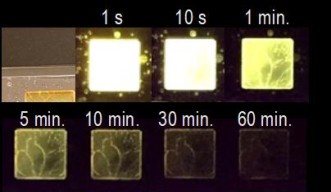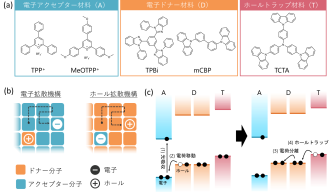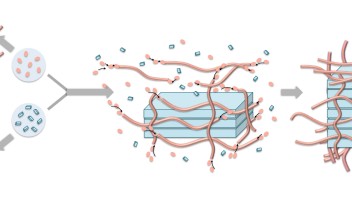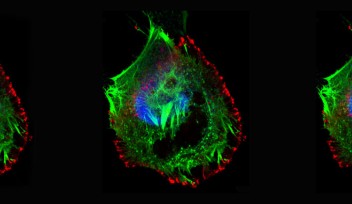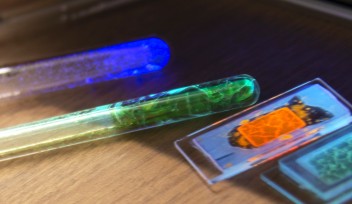Researchers light the way for organic glow-in-the-dark materials

Highlights
- Glow-in-the-dark materials fuel a US$400 million global industry, thanks to their usefulness in emergency signs, watches, and paint.
- However, they are currently made from inorganic crystals that require a high fabrication temperature and often rare-earth metals.
- Researchers are looking at how organic materials could be utilized to create the glow-in-the-dark effect instead, which would enable the industry to expand and diversify sustainably.
- Previous research has created a glow with organic materials, but the performance was far weaker than the glow created by the inorganic varieties.
- The researchers found that by tweaking the emission mechanism and the molecules used, they could improve the performance of the organic molecules by tenfold.
Main text
Glow-in-the-dark materials are utilized worldwide for emergency signs, watches, and paint. This useful characteristic fuels a global market worth approximately US$400 million. But the inorganic crystals that are currently needed to generate this ability to a high level of performance require rare-earth metals and fabrication temperatures of over 1000 degrees Celsius. Now, writing in Nature Materials, researchers from the Okinawa Institute of Science and Technology Graduate University (OIST) and Kyushu University, both in Japan, have developed a method to generate a glow-in-the-dark light using the more-readily available organic materials.
“Not only are organic materials much more available and easier to work with than inorganic materials but they are also soluble, which has the potential to diversify and expand the use of glow-in-the-dark objects, as the characteristic could be added to inks, films, and textiles,” stated Prof. Chihaya Adachi, director of the Center for Organic Photonics and Electronics Research (OPERA), Kyushu University. “Another important application is their potential use in bioimaging, which could have a myriad of benefits for health science.”

In 2017, researchers showed, for the first time, that two organic materials could create a glow-in-the-dark effect. This was seen as a great success and published in Nature. However, the performance was almost 100 times weaker than with the inorganic varieties. In fact, the researchers had to use an ultraviolet light to generate the emissions, had to go into a dark room to see the light, and couldn’t expose the samples to oxygen. Now, the researchers have produced a better outcome when they progressed from a method with two components to a method with three components and changed the molecules they used. The result was emissions that lasted for over one hour at room temperature, a tenfold improvement from the previous work.
“It’s a four-stage process to create the glow-in-the-dark effect—charge transfer, separation, recombination, and, finally, emissions,” explained Prof. Ryota Kabe, who leads OIST’s Organic Optoelectronics Unit. “Within the molecules, electrons are nestled in holes. An important part of the process is separating the electrons from the holes. When the two come back together, it generates the glow.”
In the previous research, when the organic materials were energized by light, electrons would be transferred from a molecule dubbed the electron donor to a molecular dubbed the electron acceptor. However, an issue was caused as the electron acceptor could not store a large number of electrons. When the electrons returned to the donor, this recombination created the glow effect but because the number of stored electrons was limited, the glow was not strong and rapidly faded away.
However, in this new work, the researchers did several things differently. Firstly, they used molecules that ensured the holes were the things that moved rather than the electrons. This hole diffusion system reduced the probability of the molecules reacting with the air so ensured the samples would glow whilst exposed to oxygen. Secondly, the researchers added in the third component—a hole trapper, which kept the electron and the hole separated for longer, allowing more holes to build up and increasing the resulting emissions period. And finally, they used molecules that required less energy to move between the different steps of the process, ensuring that the whole process took less energy and allowing the emissions to be generated in visible light, rather than just ultraviolet light.
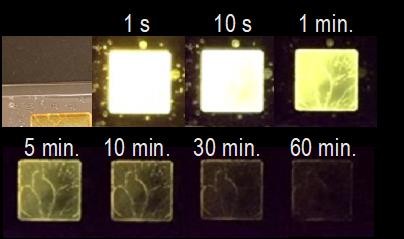
“By tweaking the method, we’ve successfully improved the performance of organic molecules by ten times the previous work,” Prof. Kabe concluded. “The organic molecules now work in air, though the performance is still weak. We will continue to work to tune the emissions until they are on par with those produced by the inorganic crystals.”
Article information
Specialties
Research Unit
For press enquiries:
Press Inquiry Form











